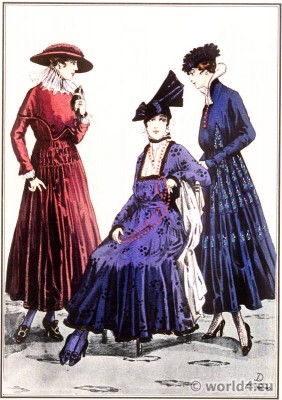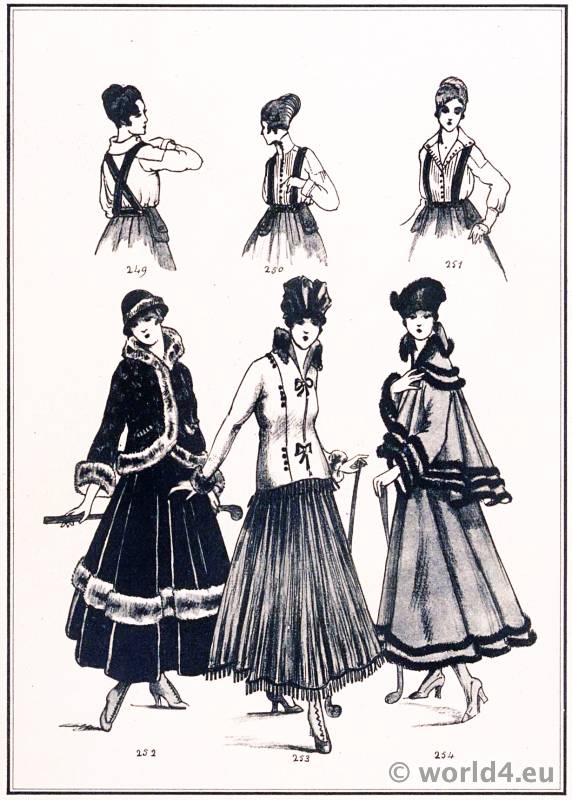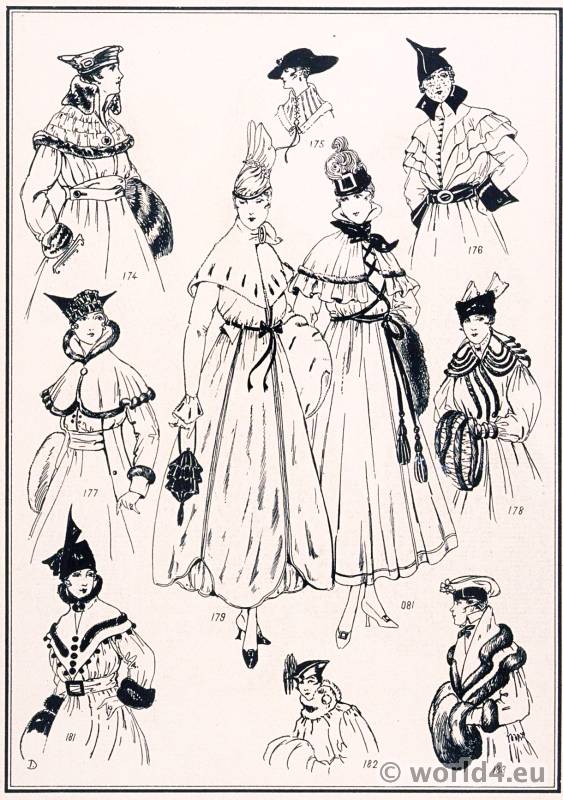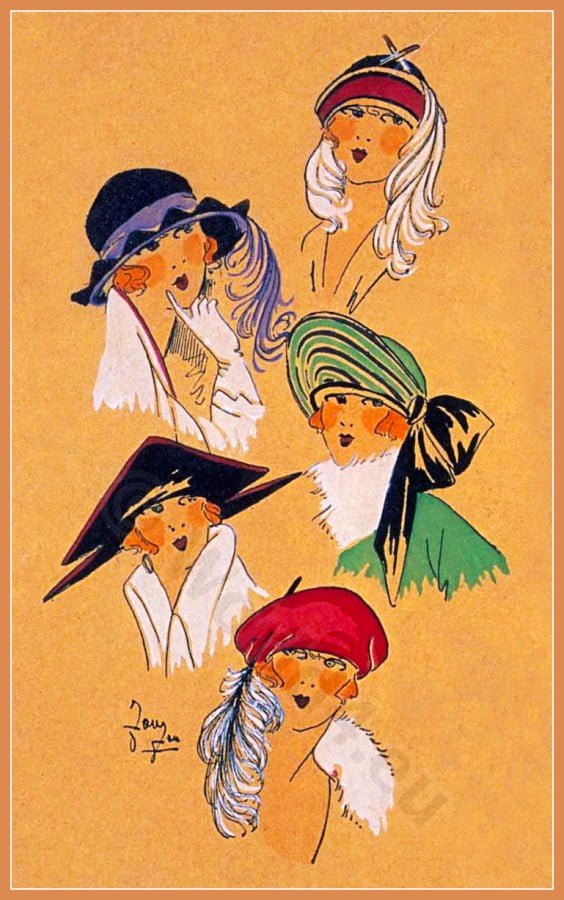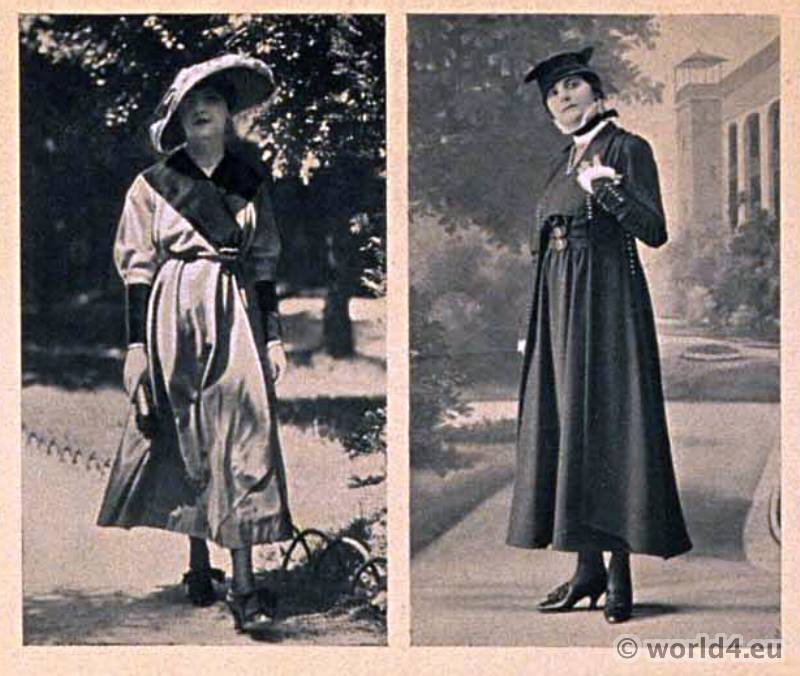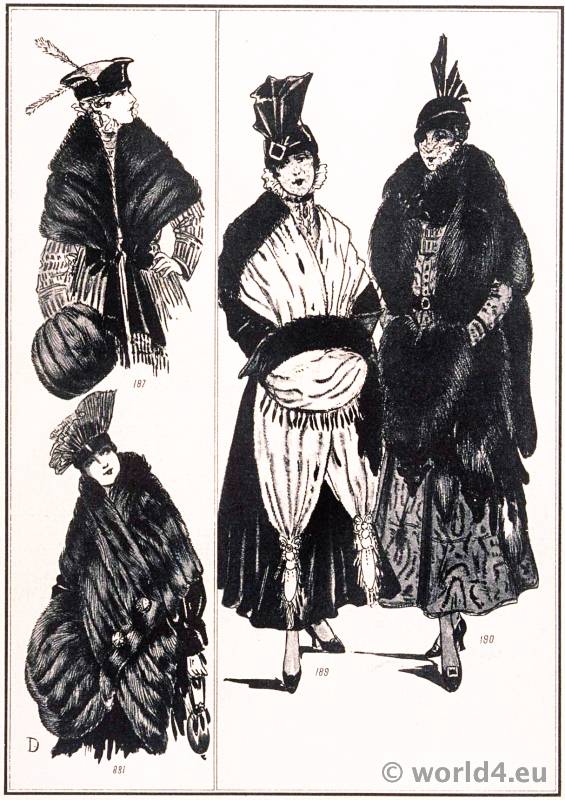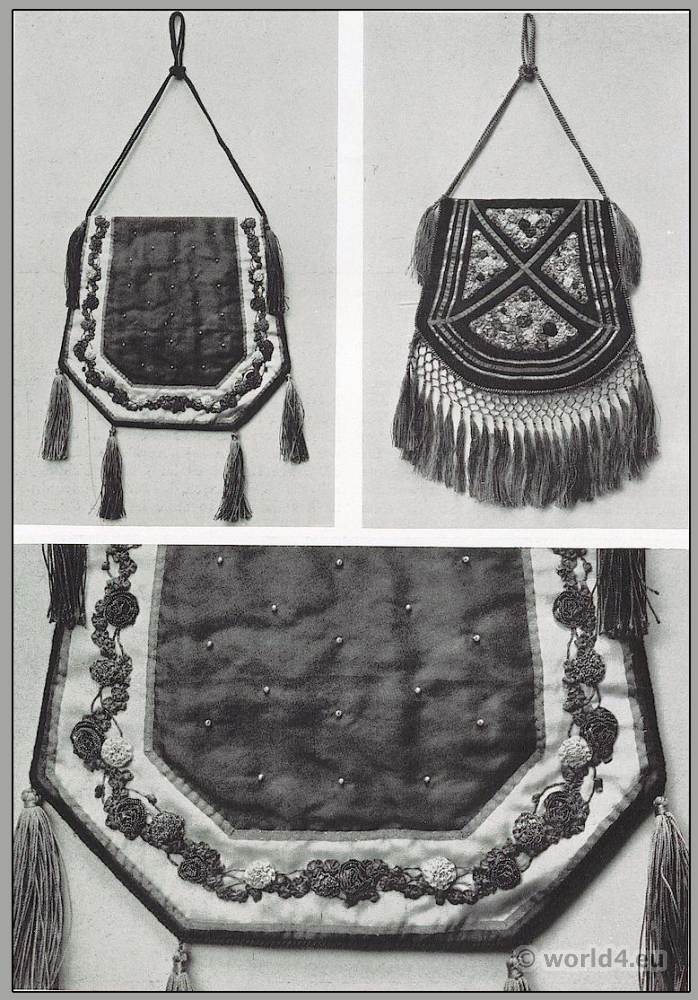Modèles du Style Parisien Robes de Soie – Silk dresses 1915.
Modèles du Style Parisien d’après les Tissus de Bianchini et Férier.*
- Dress in cleared colored Britannia; handsome and rafter stiff corded silk (Bianchini No. 20770). Bodice shaped like a large collar; collar bordered with black velvet. White tule collerette. Skirt gathered and trimmed with two black velvet ribbon round the border.
- Dress in worked Sueza: a corded silk brooch with satin spots (Bianchini No. 19023). Guimpe of piped tulle. Lower part of skirt and bodice trimmed with skunk. Smocking under yoke.
- Dress in navy blue taffetas trimmed with ” taffetas latte ” embroidered (Bianchini No. 19012). Collar lined with ivory faille.
Gallery: Le style parisien. Plate V. Supplément du ” Style Parisian ” No 3. Le Directeur – Gérant: Lucien Vogel.
*Bianchini-Férier is a silk manufactory founded in 1888 in Lyon by the association of the creator Charles Bianchini, technician François Atuyer and financial François Férier. In 1912 it moved to the Avenue de l’Opéra in Paris and worked with all the major fashion houses of haute couture together as Worth Poiret, Doucet, Vionnet, Lanvin, Patou, Carven, Paco Rabanne, Nina Ricci, Chanel, Dior, Yves Saint Laurent, Christian Lacroix, Jean Paul Gaultier, Hussein Chalayan, Dries Van Noten. On the other hand, Charles Bianchini promotes collaborations with artists. The longest of these collaborations is certainly that of Raoul Dufy (formerly with Paul Poiret), which signed an exclusive contract with the house of the Lyon silk and is the designer and artistic director from 1912 to 1928. He imagines a particular logo representing the metamorphosis of a caterpillar into a butterfly in the petals of a flower to symbolize the link between the company and silk. “The ornamentation in the tissue is an additional thing to life; as a small illustration can play its role with discretion in relation to its physical fragility. “. His compositions are dedicated to Pegasus, the Procession of Orpheus, the Dance.
Other artists who have collaborated with Bianchini-Férier: Georges Barbier, Paul Iribe, Yoni Beaugourdon, Sonia Delaunay, Leleu, Robert Bonfils, Henri Gillet, Paul Mansouroff, Jacques-Henri Lartigue, or later Vasarely, Kientz, Daniel Buren.
Related:
Fin de siècle era, Art Nouveau, Art deco, Flapper, Gibson girls, Roaring Twenties.
- Les Creations Parisiennes. La mode est un art.
- Le style parisien. Les elegances parisiennes 1915. by Lucien Vogel. (Art Nouveau. Fin de siècle, Belle Époque era.)
- Les Robes de Paul Poiret racontée par Paul Iribe, Paris 1908.
- Paris Fashion Designers in 1916.
- Supplément du ” Style Parisian ” No 3. Les elegances parisiennes 1915.
- Lotte Pritzel. Dolls for the showcase 1911.
- Les Chapeaux du Très Parisien Vol. 1., by G.P. Joumard. First edition 1921. (Flapper, Gatsby, Art deco era.)
- Les Chapeaux du Très Parisien Vol. 2,.G.P. Joumard. Second edition 1922.
- Les créations parisiennes. La mode est un art. Published 1929. (Flapper, Gatsby, Art deco era.)
- STYL 1922-1924. German Fashion Magazine. (Berlin Roaring twenties. Flappers, Art deco era.)
Samson and Delilah Revisited: The Politics of Women’s Fashion in 1920s France by MARY LOUISE ROBERTS. (PDF)
- The Incroyables and Muscadins. The French directory dandies.
- Les Incroyables et Merveilleuses. French directoire fashion era.
- The days of the Directoire by Alfred Allinson.
- The Gallery of Fashion by Nikolaus von Heideloff. Regency, Empire, Neoclassical.
- Nymphs and Merveilleuses. Directoire, Neoclassical, Regency, Empire by Octave Uzanne.
- Reign of Napoleon I. 1804 to 1814. French First Empire fashion. (England Regency, Georgian fashion period)
- Reigns of Louis XVIII. and Charles X. 1815 to 1830. The Restoration period, Romantic era, German Biedermeier.
- Romantic fashion in the Reign of Philippe. 1830 to 1848. Victorian era. Crinoline.
- Fashion and costume in the eighteenth century
Discover more from World4 Costume Culture History
Subscribe to get the latest posts sent to your email.

